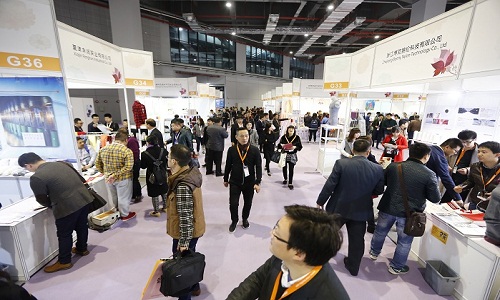"Cotton and yarn prices have been upbeat in the last three months. China however hasn’t participated in this rally much – typically Yarn Expo is a time for bulk buying as both buyers and sellers meet physically. “For last couple of years, it’s been a buyers’ market, however I feel this Expo will see a shift towards sellers. This Expo has been keenly looked at by all to see Chinese buyers will embrace global yarn prices or not,” says Sanjay K Jain, MD, TT & Chairman NITRA."
Cotton and yarn prices have been upbeat in the last three months. China however hasn’t participated in this rally much – typically Yarn Expo is a time for bulk buying as both buyers and sellers meet physically. “For last couple of years, it’s been a buyers’ market, however I feel this Expo will see a shift towards sellers. This Expo has been keenly looked at by all to see Chinese buyers will embrace global yarn prices or not,” says Sanjay K Jain, MD, TT & Chairman NITRA. They are exhibiting the full range of cotton yarn from 20/1 to 60/1 in both organic and conventional cotton. Carded and combed yarn for both weaving and knitting are being offered.
Highlighting business dynamics in China, Jain says yarn imports have been negligible from January as China refused to accept higher prices – however shipments have been brisk till Mid Feb. Volatility always impacts business flow and this year is no exception. There is a lot of confusion in the minds of people and no one knows what position to take. Yarn exports to China which were high in October to December, have almost dried up now. The Expo will decide the shipment flow for the next two months. The changed dynamics have kept prices within control, if China accepts higher prices, then we can expect higher prices in the days to come.
Strategies to deal with current crisis
Trends in global yarn production and yarn stocks low margins and losses have kept yarn production low, while consumption is marginally up hence, yarn stock levels are low. China’s decreasing yarn import is causing exporters to search for new markets. In the wake of this, Bangladesh is always the next best market.
He says, Vietnam and Indonesia yarn export to China is increasing, on the back of no import duty, while India and Pakistan lose due to the levied import duties. To which, he says that it’s a common story for India everywhere. “We are losing to non-preferential tariffs vis-à-vis our competition. Government is also not giving MEIS to yarn despite us being at a disadvantage and having so much surplus yarn. The main focus should be the domestic demand from India due to increase in fabric and garment production in India.”
Jain says irrespective of TPP withdrawal, India will continue to be a big force in the global yarn trade for a long time to come. In times of crisis, a company should live by the day – world is too volatile and uncertain to make any predictions and strategy. It’s dangerous to carry open positions in today’s market – they could be some nasty surprises, concludes Jain.














